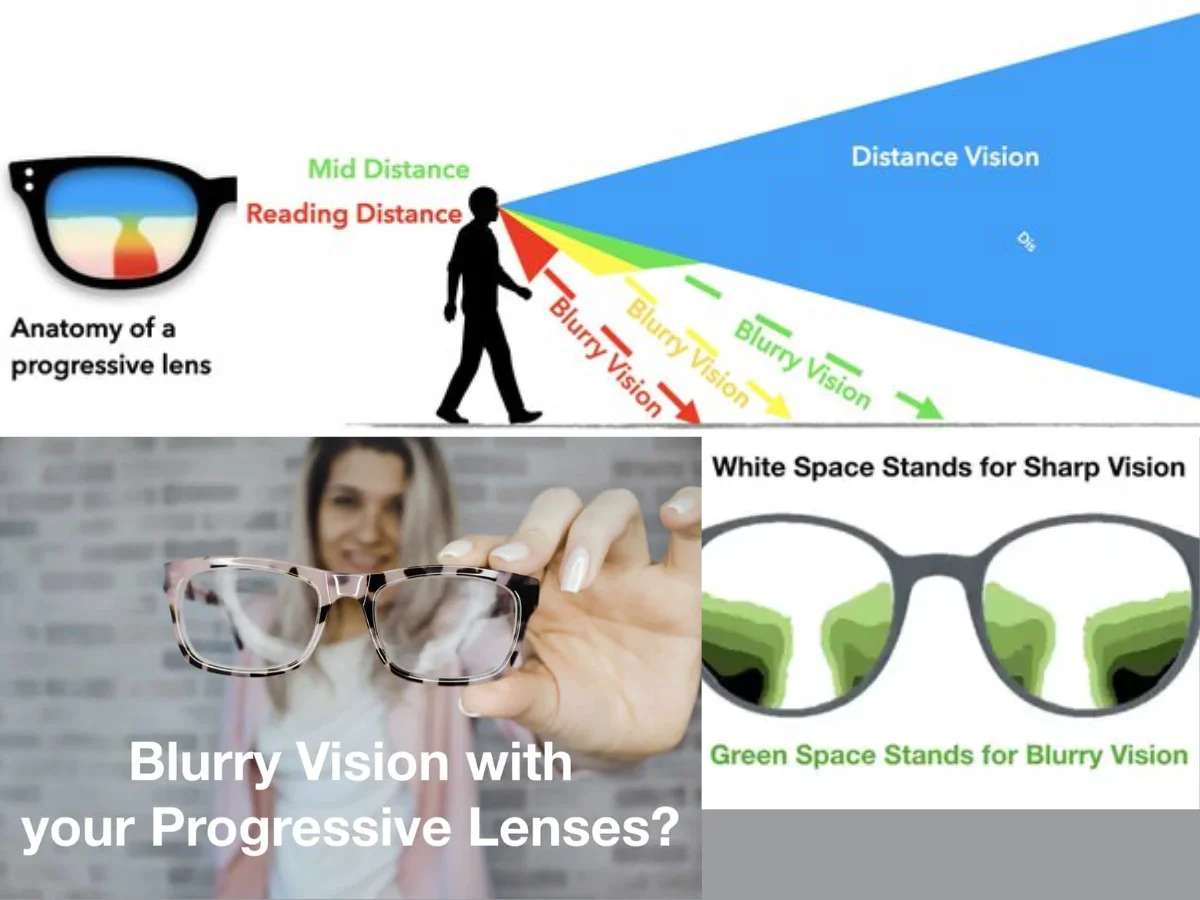Progressive lenses have revolutionized the eyewear industry by providing a seamless solution for individuals with presbyopia, a condition that affects near and distant vision. However, some wearers may encounter challenges, particularly when it comes to blurry distance vision. In this comprehensive guide, we’ll explore the causes of blurry distance vision with progressive lenses and offer practical solutions to help you enjoy a clear and comfortable visual experience.
Introduction
Progressive lenses are a remarkable advancement in eyewear technology, designed to address the vision needs of those with presbyopia, an age-related condition that makes focusing on near objects challenging. However, while they offer excellent multifocal capabilities, blurry distance vision can be a concern for some wearers.
Understanding Progressive Lenses
Progressive lenses, often referred to as multifocal lenses, feature a gradual transition between three visual zones: distance, intermediate, and near vision. This design eliminates the need for multiple pairs of glasses, allowing wearers to see clearly at various distances without switching.
Blurry Distance Vision: Causes and Concerns
Blurry distance vision with progressive lenses can be attributed to several factors:
- Peripheral Distortion: The peripheral areas of progressive lenses can cause distortion, affecting distance vision.
- Improper Fitting: Incorrectly fitted lenses may result in suboptimal visual performance, including blurry distance vision.
- Adaptation Period: Adjusting to progressive lenses can take time, and during this period, some users may experience blurriness, especially in the distance zone.
Tips for Improving Blurry Distance Vision
To enhance distance vision clarity with progressive lenses, consider these tips:
- Proper Frame Selection: Choose frames that are suitable for progressive lenses, allowing for the correct positioning of the distance zone.
- Optimal Lens Positioning: Ensure that your lenses are correctly positioned in the frame, with the distance zone aligned with your eyes’ pupils.
- Gradual Adaptation: Give yourself time to adapt to progressive lenses. Start by wearing them for shorter periods and gradually increase wear time.
Exercises to Enhance Visual Clarity
Engaging in eye exercises can help improve visual clarity:
- Eye Tracking: Practice tracking moving objects at a distance to enhance your eye’s ability to focus on distant targets.
- Focusing Exercises: Perform exercises that involve shifting your focus between near and distant objects to strengthen your eye muscles.
Consulting an Eye Care Professional
If blurry distance vision persists despite adjustments and exercises, consult your eye care professional. They can assess your lenses, make necessary modifications, or suggest alternative options to ensure clear distance vision.
Conclusion
Progressive lenses are a valuable solution for individuals with presbyopia, offering multifocal capabilities in a single pair of glasses. While blurry distance vision can be a temporary challenge, understanding its causes and implementing the provided tips and exercises can help you enjoy a clear and comfortable visual experience.
FAQs (Frequently Asked Questions)
8.1 What are progressive lenses, and how do they work?
Progressive lenses are multifocal eyeglass lenses designed to address presbyopia. They work by providing a seamless transition between distance, intermediate, and near vision zones, allowing wearers to see clearly at various distances.
8.2 Why does distance vision sometimes appear blurry with progressive lenses?
Distance vision can appear blurry with progressive lenses due to factors such as peripheral distortion, improper fitting, and the adaptation period required for wearers to become accustomed to these lenses.
8.3 Can progressive lenses be adjusted to improve distance vision?
Yes, progressive lenses can be adjusted by an eye care professional to improve distance vision. Proper fitting and lens positioning are essential for optimal visual performance.
8.4 How long does it take to adapt to progressive lenses?
The adaptation period varies from person to person but typically takes a few days to a couple of weeks. Consistent wear and gradual adjustment can expedite the process.
8.5 Are there alternatives to progressive lenses for clear-distance vision?
Yes, alternatives to progressive lenses for clear distance vision include single-vision glasses for distance or specialized occupational lenses designed for specific tasks. Discuss your needs with your eye care professional to determine the best option for you.
Read More: https://www.rozyjos.com/
More Related:
Should I Get a U-Haul Collision Damage Waiver?
What Happens If You Don’t Pay Progressive Leasing
Liberal Christianity vs Progressive Christianity: Exploring the Differences
How to Determine if Your Prescription Is Single Vision or Progressive
Can I Get Single Vision Glasses with a Progressive Prescription?
How to Make Progressive Bill Pay Without Logging In
Understanding and Alleviating Eye Strain with Progressive Lenses

